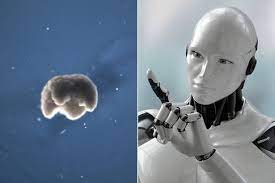
Breaking News
 How To Become Competent, Confident, and Dangerous, with guest Doug Casey
How To Become Competent, Confident, and Dangerous, with guest Doug Casey
 My Hot Take On Bill Gates' Climate Change Essay | Alex Epstein #457 | The Way I Heard It
My Hot Take On Bill Gates' Climate Change Essay | Alex Epstein #457 | The Way I Heard It
 Discussion on Covid Vaccination Should Be Non-Controversial
Discussion on Covid Vaccination Should Be Non-Controversial
Top Tech News
 HUGE 32kWh LiFePO4 DIY Battery w/ 628Ah Cells! 90 Minute Build
HUGE 32kWh LiFePO4 DIY Battery w/ 628Ah Cells! 90 Minute Build
 What Has Bitcoin Become 17 Years After Satoshi Nakamoto Published The Whitepaper?
What Has Bitcoin Become 17 Years After Satoshi Nakamoto Published The Whitepaper?
 Japan just injected artificial blood into a human. No blood type needed. No refrigeration.
Japan just injected artificial blood into a human. No blood type needed. No refrigeration.
 The 6 Best LLM Tools To Run Models Locally
The 6 Best LLM Tools To Run Models Locally
 Testing My First Sodium-Ion Solar Battery
Testing My First Sodium-Ion Solar Battery
 A man once paralyzed from the waist down now stands on his own, not with machines or wires,...
A man once paralyzed from the waist down now stands on his own, not with machines or wires,...
 Review: Thumb-sized thermal camera turns your phone into a smart tool
Review: Thumb-sized thermal camera turns your phone into a smart tool
 Army To Bring Nuclear Microreactors To Its Bases By 2028
Army To Bring Nuclear Microreactors To Its Bases By 2028
 Nissan Says It's On Track For Solid-State Batteries That Double EV Range By 2028
Nissan Says It's On Track For Solid-State Batteries That Double EV Range By 2028
Scientists Merged Robots with Embryonic Cells to Make Living Robots that Can Reproduce--

Scientists at the University of Vermont, Tufts University, and Harvard have revealed that the first-ever Artificial Intelligence (AI) designed living robots, Xenobots, that can reproduce themselves in an entirely new process of biological propagation. In 2020, Xenobots were created from embryonic cells of the African clawed frog (Xenopus laevis), and with the aid of artificial intelligence, the tiny computer-designed organisms can travel, gather cells (loose stem cells) and assemble their own Xenobots inside themselves. The new Xenobots look and behave just like their 'parent' and can also replicate themselves, ad infinitum. The scientists are already scheming to use the organisms in the lucrative field of medicine and vaccines, never mind the risks.

 Dark Tidings
Dark Tidings Carbon based computers that run on iron
Carbon based computers that run on iron

